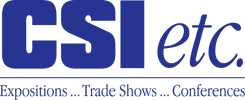The hard facts we have all been waiting for (even if we already knew they existed):
For every dollar invested in trade shows, returns are in the $4 to $5.99 range!!
Here is the complete release:
SEPTEMBER 15, 2009 -- The U.S. Travel Association today released a study that draws a direct link between business travel and corporate revenue and profit growth.
According to the study, conducted by global research firm Oxford Economics, for every dollar invested in a company meeting, the return is in the range of $15 to $19.99. Conferences and trade shows are in the $4 to $5.99 range. Data also showed that in order to achieve the same effect of incentive travel, an employee's total base compensation would need to be increased by 8.5 percent. According to the figures, an incentive trip yields a return of more than four times the investment, not including any broader motivation the opportunity provides to those who do not meet the award criteria.
Oxford Economics USA conducted the study of 300 U.S. corporate executives and 500 business travelers from late spring through the summer. A professor of finance and economics at the Wharton School at the University of Pennsylvania audited the methodology.
Other findings indicated that for every dollar invested in business travel, businesses average $12.50 in increased revenue and $3.80 in new profits.
"This study shows that not all spending cuts are smart cuts," said Adam Sacks, managing director of Oxford Economics. "When companies cut their travel budgets, there are negative consequences that we can now quantify, in terms of lost revenue and profit growth, and in terms of giving competitors a distinct advantage."
The study also found that curbing business travel can have a strong negative impact on corporate profits. The average business in the United States would forfeit 15 percent of its profits in the first year of eliminating business travel.
"Business travel is economic stimulus," said Roger Dow, president and CEO of the U.S. Travel Association, which commissioned the study. "In order to grow, businesses have to invest. This study shows that face-to-face meetings and incentive awards to top performers are among the smartest investments companies can make."
Wednesday, September 16, 2009
Tuesday, September 8, 2009
Plan of Attack - Realism Meets Optimism
This is part two in our (almost!) real time series of how one of our clients is dealing with dramatically decreased exhibitor and attendee numbers.
The assessment completed, we now needed to form a realistic plan of attack. What was equally important to the mission was keeping a sense of vitality and optimism among all parties involved, while clearly communicating the reality of the situation. Here is distilled version of what we did:
Space
The contracted space was much bigger than we now needed and even though we released space back to the venue, they were unable to resell the space in time for our client to avoid penalties. We were able to help them negotiate a cost break due to the overwhelming issues the economy has created, and the loyalty our client has shown to the venue. However, we still had a lot of space. Since perception is everything, we knew we had to visually make the space look full, so we altered the layout of the exhibit hall by dropping airwalls where possible and putting in a large physical "staging area" to reduce width. We also widened aisles, added lounge spaces in open booth areas, and added cocktail rounds to break up the visual openness.
Exhibit Income:
With fewer exhibitors, the budget was slashed for decoration and food and beverage. To help on very little budget, we added background music to provide ambience (and reduce echo) and carefully placed spandex arches and walls with uplights to take the place of planned decoration. Because the elaborate food stations were not possible, we worked with our client to move toward passed hors d'oeuvres for less time and spaced the timing to make them stretch. The hosted bar was replaced by a cash bar.
With fewer exhibitors, the budget was slashed for decoration and food and beverage. To help on very little budget, we added background music to provide ambience (and reduce echo) and carefully placed spandex arches and walls with uplights to take the place of planned decoration. Because the elaborate food stations were not possible, we worked with our client to move toward passed hors d'oeuvres for less time and spaced the timing to make them stretch. The hosted bar was replaced by a cash bar.
We needed our exhibitors to realize fewer attendees wouldn't necessary impact the outcome of their participation. We created and emailed an exhibitors guideline "cheat sheet" before the event that provided a profile of the expected attendees along with tips on how to engage them. We covered items that indirectly addressed the lower attendee count, such as the ability to spend the time to learn their needs so the next steps could be closer to a decision. Quality over quantity became the theme.
In the next entry, we will discuss reaction from the client, exhibitors and attendees to the changes.
Need to tackle a problem with viable solutions? Contact karenm@meetcsi.com to learn how simple steps can make a big difference.
Subscribe to:
Posts (Atom)
